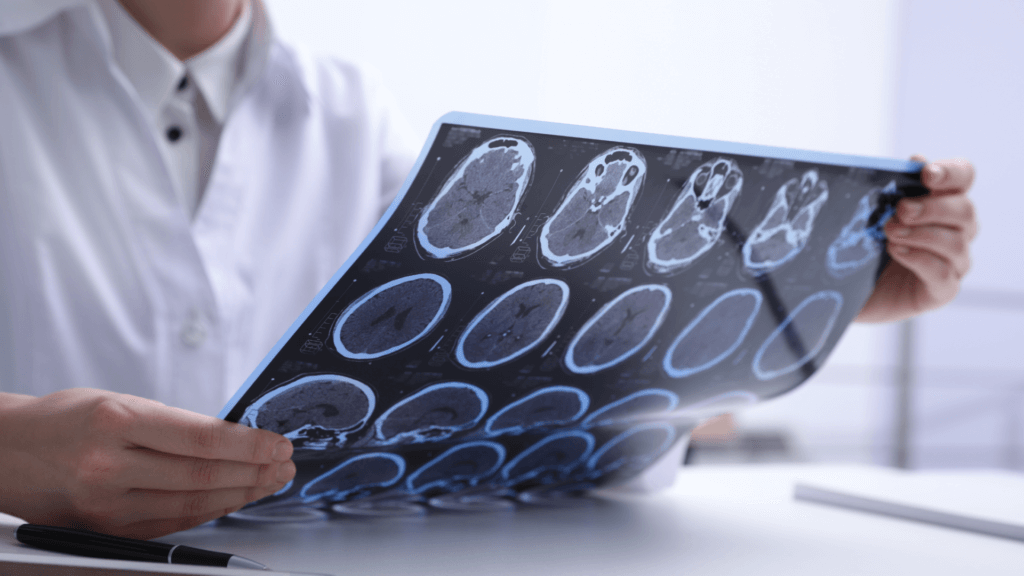
For many, sports can provide an outlet for exercise and can reduce stress. Full-contact sports like football, however, can be particularly dangerous. Not only are the bodies of football players subject to intense pummeling, but repeated injuries to the head – like concussions – can be quite prevalent. In these cases, multiple blows to the head can slowly bring about a degenerative brain disorder called chronic traumatic encephalopathy or CTE.
Over the years, cases of CTE have been found in the brains of countless college and professional football players who suffered multiple concussions while on the field. Ongoing cases of the disorder have increased the need for a better understanding of CTE and how it can be diagnosed.
What is CTE?
CTE is a progressive degenerative disease found in the brain that is caused by repeated head trauma. In both professional and amateur sports, repeated blows to the head and traumatic brain injuries (TBI) can and often do happen over time. While not all blows cause concussions, which can lead to the progression of CTE, many do.
Instances of TBI happen more regularly than one may assume. According to the American Association of Neurological Surgeons (AANS), roughly 1.7 million cases of TBI happen each year in the U.S. Among the most common types of TBI is a concussion or a mild traumatic brain injury (mTBI). While TBIs can happen to anyone at any time, sports-related concussions happen at an alarming frequency of up to 3.8 million per year in the U.S. alone.
Concussions are caused by a bump, blow, or jolt to the head or body that results in rapid brain movement or bouncing inside the skull. Following the initial impact, the brain will slam against the inside of the skull and then rebound to the other side where it can also twist. These abrupt movements damage the brain, causing internal swelling, typically without any outward signs of injury.
According to the Centers for Disease Control and Prevention (CDC), falls are the leading cause of concussions. Other common causes of concussions include being struck by or against an object, car crashes, and more. While most contact sports, like football, require helmets, Q-collars, and other equipment to protect players from head injuries, the available protections often fall short of keeping players from suffering concussions. This oversight often leads to players experiencing multiple head injuries, including concussions, which can cause CTE.
CTE affects the brains of those who have suffered repeated concussions and TBIs, with many diagnosed in athletes who participate in contact sports. Each time the player’s head is impacted, the shaking and disruption of the brain inside the skull result in a buildup of abnormal tau protein. The tau protein forms clumps that slowly spread throughout the brain, killing brain cells. Although CTE has been seen in people as young as 17, symptoms do not generally begin to appear until years later.
Brain damage from CTE typically persists for years after traumatic impacts to the head. The brain of a person who suffers from CTE will deteriorate and lose mass over time. While research on the disorder is still ongoing, in 2023 researchers at Boston University found 92% of former NFL players suffered from the disease.
Concussion and CTE Symptoms
Instances of concussion and CTE can present many unique short- and long-term symptoms. For instance, following a concussion, people are most likely to experience headaches and confusion. In severe cases, victims may lose consciousness and experience memory loss—such that they may not even remember being hurt. Additional short-term symptoms of concussion brain trauma can include:
- Loss of balance
- Brain fog
- Delayed response time
- Dizziness
- Ringing in the ears
- Nausea and vomiting
- Fatigue
- Blurred vision
- Sensitivity to light and sound
In addition to initial symptoms, some concussion victims also experience long-term medical problems, including:
- Trouble concentrating
- Memory problems
- Irritability and personality changes
- Sensitivity to light and noise
- Sleep disturbances
- Depression and other psychological problems
- Disorders of smell and taste
The signs and symptoms found in those suffering from CTE are broken down into four main stages, including:
No symptoms
The tau protein, which is closely linked to Alzheimer’s disease and brain damage, begins to form and build up around blood vessels in the brain and the frontal lobe.
Rage, impulsivity, and depression
Personality changes begin to appear as more of the brain’s nerve cells are affected.
Confusion and memory loss
CTE begins to affect the amygdala and hippocampus, moving from the frontal section of the brain to the temporal, impairing emotion and memory.
Advanced dementia
Tau deposits begin to overwhelm the brain, killing nerve cells and shrinking the brain by half its size. The brain becomes deformed and brittle, severely limiting cognitive function.
Diagnosing CTE
Diagnosing CTE has proven to be quite challenging for several reasons, one of which is that many of the symptoms of the disorder mimic the signs of aging, making it incredibly difficult to differentiate between the two. While CTE does present with several signs and symptoms that indicate the presence of the disorder, such as cognitive impairment and short-term memory loss, CTE can only be truly diagnosed by examining the brains of those impacted after their death.
Despite this, researchers at Boston University School of Medicine are working on a means to develop the first criteria for diagnosing CTE before death. Their ongoing Diagnose CTE project was first introduced in 2021 and aims to provide researchers with detailed criteria for diagnosing those who suffer from traumatic encephalopathy syndrome (TES) with a provisional level of certainty that CTE is present. These new findings come after years of recognizing the link between repetitive hits to the head in contact sports and CTE.
Their criteria, which were published in the journal Neurology, state a person diagnosed with TES for research purposes must have had (1) substantial exposure to repetitive head trauma for a minimum of five years, (2) the presence of cognition disorders, such as memory issues, and (3) an assessment of whether their conditions are worsening over time. If these criteria are met, the individual’s level of functioning is then graded, including an assessment for dementia.
While the criteria will be refined over the next few years, the overall goal is for doctors to utilize them to identify patients and help them before the disorder progresses.
NCAA Football and CTE
According to the Journal of Athletic Training, roughly 300,000 traumatic brain injuries (TBIs) happen each year. Despite these injuries occurring in nearly every sport or high-contact activity, concussions and other TBI-related injuries are most common in football. The National Collegiate Athletic Association (NCAA) has been under fire for many years for failing to warn student football players of the dangers of concussions, and even sending players back on the field after suffering a head injury.
The more head injuries or concussions a player suffers on the field, the more likely that player is to suffer from migraines, chronic pain, and potentially develop CTE. The unfortunate reality in many of these instances is that sports organizations like the NCAA have historically responded poorly to injured players. In many cases, if a football player has a concussion or head injury, they are encouraged to continue playing. The players who do leave the field after a concussion are often not given enough time away from play to allow their brains to fully heal.
Researchers at Boston University have determined athletes do not need to suffer a severe head injury or concussion, as even minor but repeated hits to the head can trigger CTE. Because of this, college football players who needlessly suffer multiple head injuries like concussions during play should consult with an experienced NCAA head injury attorney.
NCAA Head Injury Attorneys
At Raizner Slania, we’ve worked firsthand with athletes who have suffered injuries due to the negligence of coaches, the NCAA, universities, and athletic conferences. If you or someone you know has suffered a head injury caused by sports-related concussions, it is in your best interest to consult with an NCAA head injury attorney.


